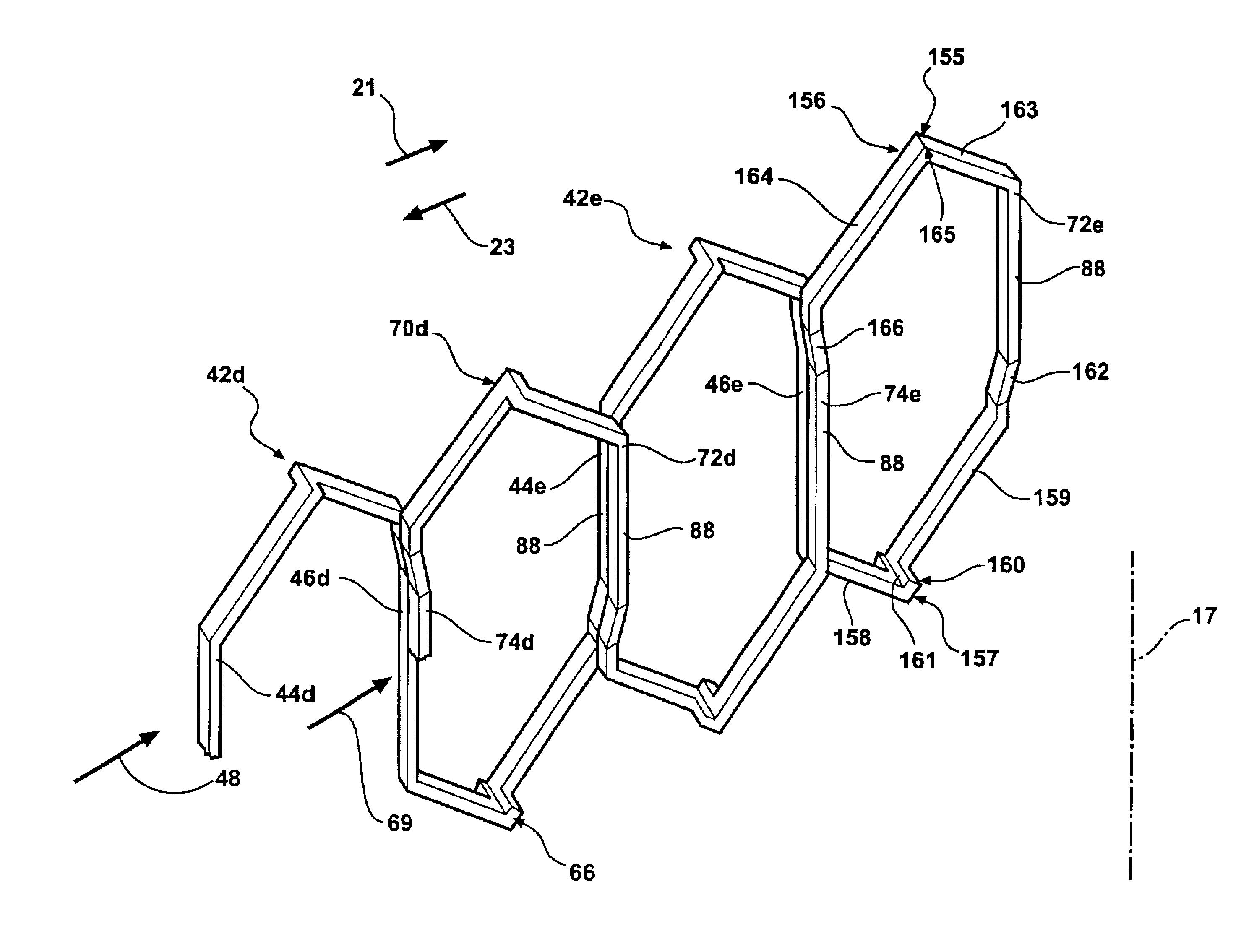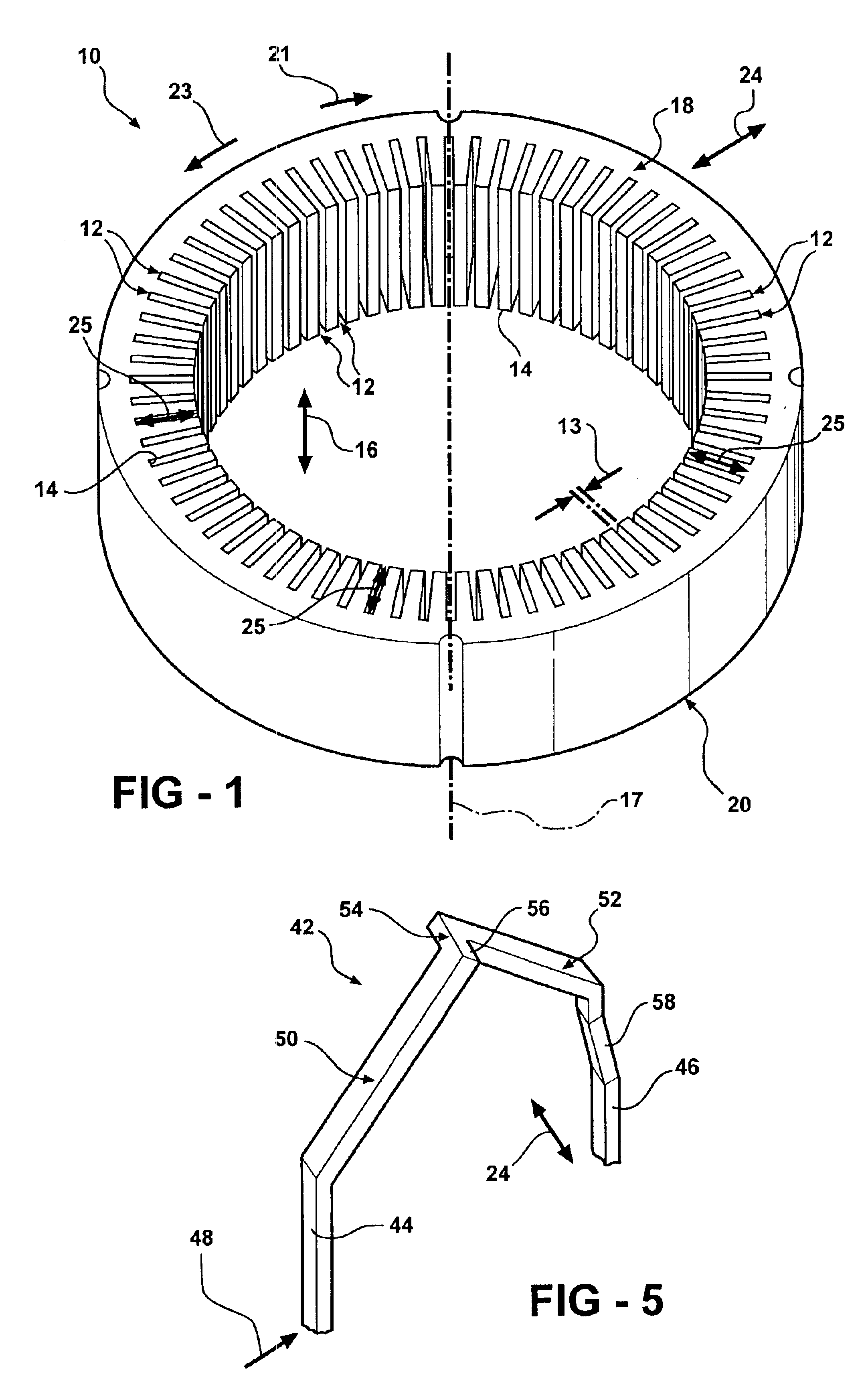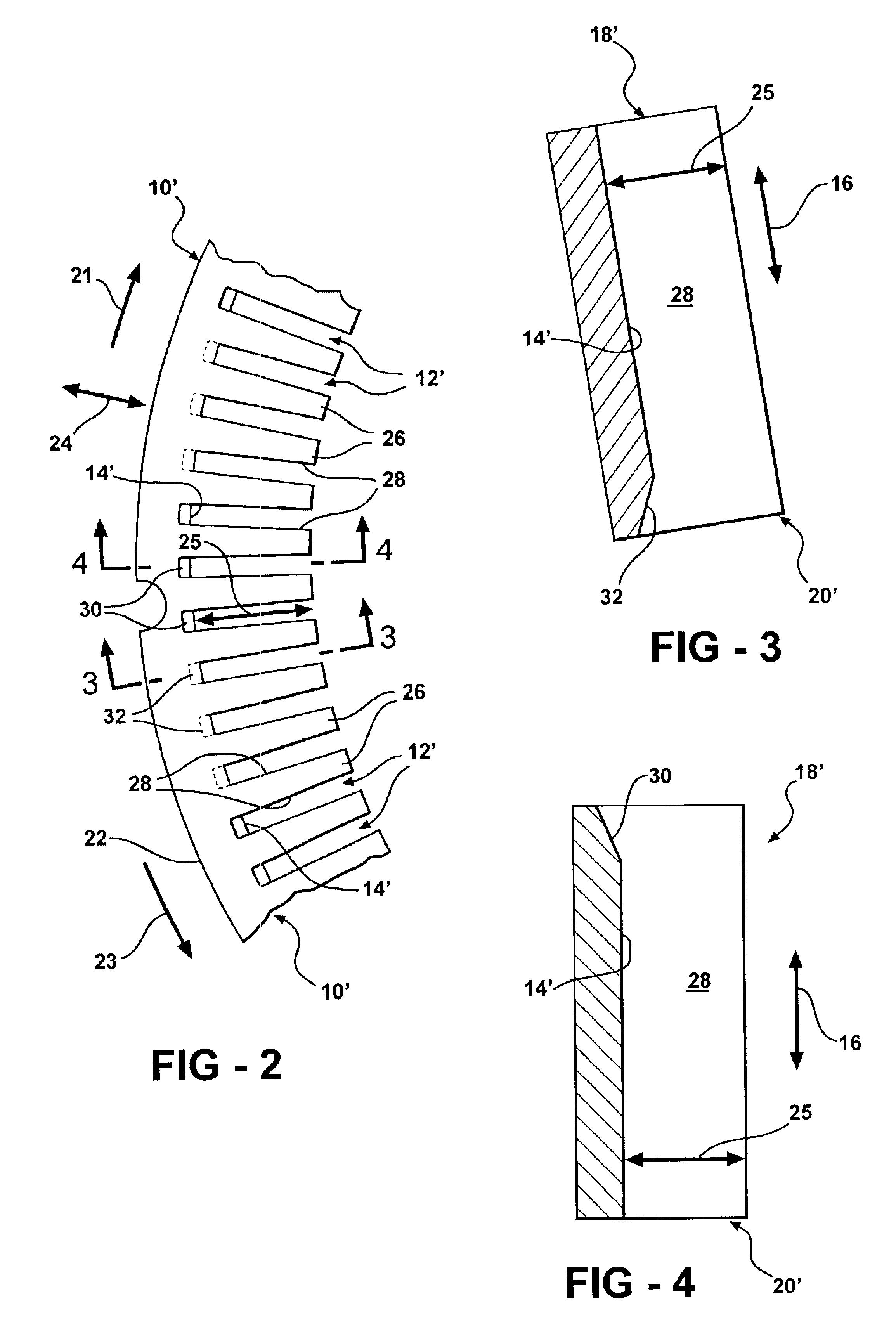Stator winding having cascaded end loops
a technology of cascaded end loops and windings, which is applied in the direction of windings, dynamo-electric components, magnetic circuit shapes/forms/construction, etc., can solve the problems of increasing the complexity of winding the stator, increasing the difficulty of manufacturing the stators, and disadvantages of the stators
- Summary
- Abstract
- Description
- Claims
- Application Information
AI Technical Summary
Benefits of technology
Problems solved by technology
Method used
Image
Examples
Embodiment Construction
[0023]Referring now to FIG. 1, a generally cylindrically-shaped stator core is indicated generally at 10. The stator core 10 includes a plurality of core slots 12 formed in a circumferential interior surface 14 thereof. The core slots 12 extend in a direction, indicated by an arrow 16, parallel to the central axis 17 of the stator core 10 between a first end 18 and a second end 20 thereof. An axially upward direction is defined as moving toward the first end 18 of the stator core 10 and an axially downward direction is defined as moving toward the second end 20 of the stator core 10. Preferably, the core slots 12 are equally spaced around the circumferential inner surface 14 of the stator core 10 and the respective inner surfaces 14 of the core slots 12 are substantially parallel to the central axis 17. A circumferential clockwise direction is indicated by an arrow 21 and a circumferential counterclockwise direction is indicated by an arrow 23. The core slots 12 define a depth 25 al...
PUM
 Login to View More
Login to View More Abstract
Description
Claims
Application Information
 Login to View More
Login to View More - R&D
- Intellectual Property
- Life Sciences
- Materials
- Tech Scout
- Unparalleled Data Quality
- Higher Quality Content
- 60% Fewer Hallucinations
Browse by: Latest US Patents, China's latest patents, Technical Efficacy Thesaurus, Application Domain, Technology Topic, Popular Technical Reports.
© 2025 PatSnap. All rights reserved.Legal|Privacy policy|Modern Slavery Act Transparency Statement|Sitemap|About US| Contact US: help@patsnap.com



